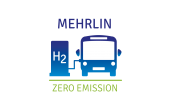The ATEX directive, describing what equipment and work environment is allowed in an environment with an explosive atmosphere. There are two ATEX directives (one for the manufacturer and one for the user of the equipment):
The ATEX directive 2014/34/EU, which covers equipment and protective systems intended for use in potentially explosive atmospheres. The Directive defines the essential health and safety requirements and conformity assessment procedures, to be applied before products are placed on the EU market. It is aligned with the New Legislative Framework policy, and it is applicable from 20 April 2016, replacing the previous Directive 94/9/EC.
The ATEX 137 workplace directive 99/92/EC, which describes minimum requirements for improving the safety and health protection of workers potentially at risk from explosive atmospheres.
European Agreement concerning the international carriage of Dangerous goods by road (ADR), which states that with the exception of certain exceptionally dangerous materials, hazardous materials may in general be transported internationally in wheeled vehicles, provided that two sets of conditions be met. These conditions are listed in Annex A and Annex B of the ADR. Annex A regulates the merchandise involved, notably their packaging and labels. Annex B regulates the construction, equipment, and use of vehicles for the transport of hazardous materials.
National authorities are responsible for implementing the European directives into their legislation. E.g. in the Netherlands, all regulations on the design, construction, maintenance and management of hydrogen delivery installations are clearly summarised in:
“Hydrogen: Installations for delivery of hydrogen to road vehicles”, Hazardous Substances Publication Series 35: version 1.0 (April 2015); PGS35-NL
Besides the legislation drawn up from a European perspective, local legislation is also relevant, including various permits to be allowed to build the hydrogen delivery installation in a certain location.






